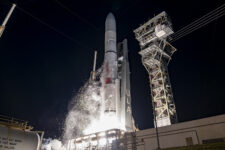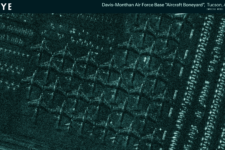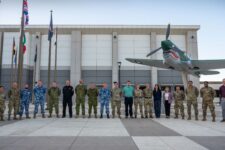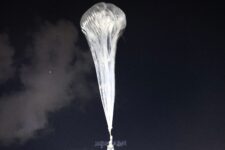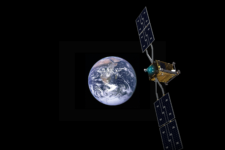
Monitoring satellites and dangerous space junk is an increasingly difficult problem as the heavens become more crowded. (NASA illustration)
WASHINGTON — The Commerce Department is extending its pilot effort to gather commercial data to underpin its planned system for monitoring the heavens and warning non-military operators of potential on-orbit collisions.
The Consolidated Pathfinder pilot’s live data collection now will continue through June 30, rather than ending at the end of this month, the Office of Space Commerce (OSC) announced today. All five contractors — COMSPOC, Kayhan Space, LeoLabs, Slingshot Aerospace, and SpaceNav — received new orders, bringing total “spending over the course of the Consolidated Pathfinder to $15.5 million,” the announcement added.
The pathfinder project focuses on gathering space situational awareness (SSA) data about objects in low Earth orbit (LEO) and testing how it can be integrated with Commerce’s nascent Traffic Coordination System for Space (TraCSS). It was launched in January, with the contracts being managed via NASA’s Global Data Marketplace. An earlier data-gathering effort back in December 2022 was conducted jointly by OSC and the Pentagon.
“The extension also allows the OSC team and the pathfinder companies to gather additional data, further explore specific technical opportunities to improve performance, and conduct additional analysis for robust metric validation. Metric validation for the operational TraCSS system is the primary objective for the pathfinder,” the OSC announcement explained.
Commerce is slowly moving to take over management of providing SSA for US and foreign commercial and civil satellite operators, which will allow the Pentagon to shake off that time-consuming mission and concentrate on adversary space activities. OSC Director Richard DelBello has been vocal in cautioning industry to curb its enthusiasm about timing, as the transition from DoD’s current system is likely to take years.
The Space Force and US Space Command currently keep two separate “catalogs” of space object data that the 18th Space Defense Squadron uses to calculate the trajectories of space objects over time — and, hopefully, predict the probability of an in-space smash up. One is public and made available through the website Space-Track.org, and the other is the high-accuracy database only shared with allies and partners who have signed formal agreements with SPACECOM.
On March 18, OSC announced it had awarded a contract worth $15.5 million to Parsons for “system integration and cloud management services” to support TraCCS.
In that role, the company “will develop the software backbone for the operational TraCSS platform, including the SSA data repository (TraCSS-OASIS) and the application layer (TraCSS-SKYLINE),” based on commercial third-party software, the announcement explained. “The company’s role also encompasses management of cloud services, cybersecurity protection and system administration for TraCSS operations.”
Space Force launches for ULA’s Vulcan slip to next year
Lt. Gen. Philip Garrant, chief of the Space Force’s Space Systems Command, stated that the service will not move forward with awards for the newest round of the National Security Space Launch program until Congress approves the fiscal 2025 budget.
